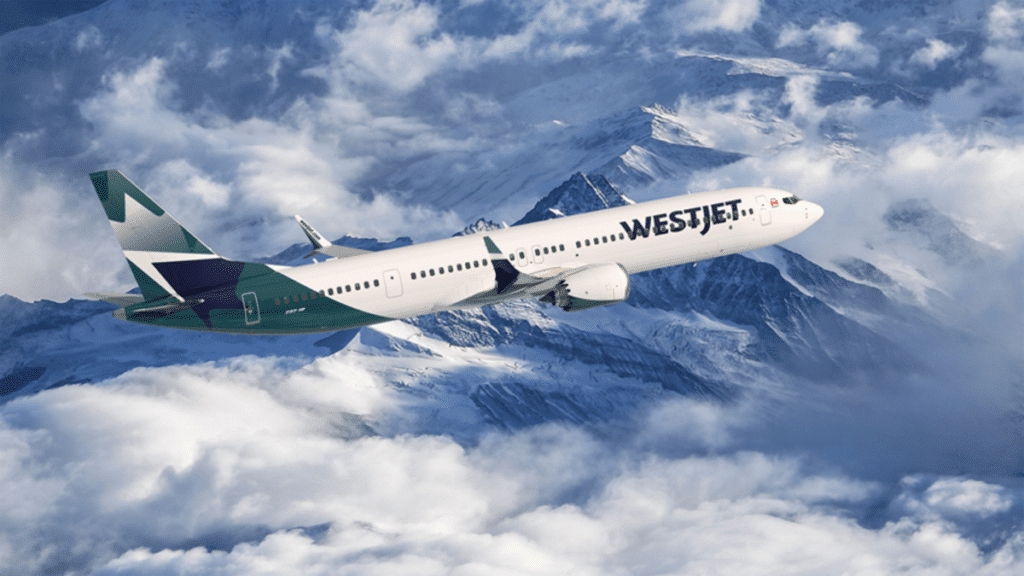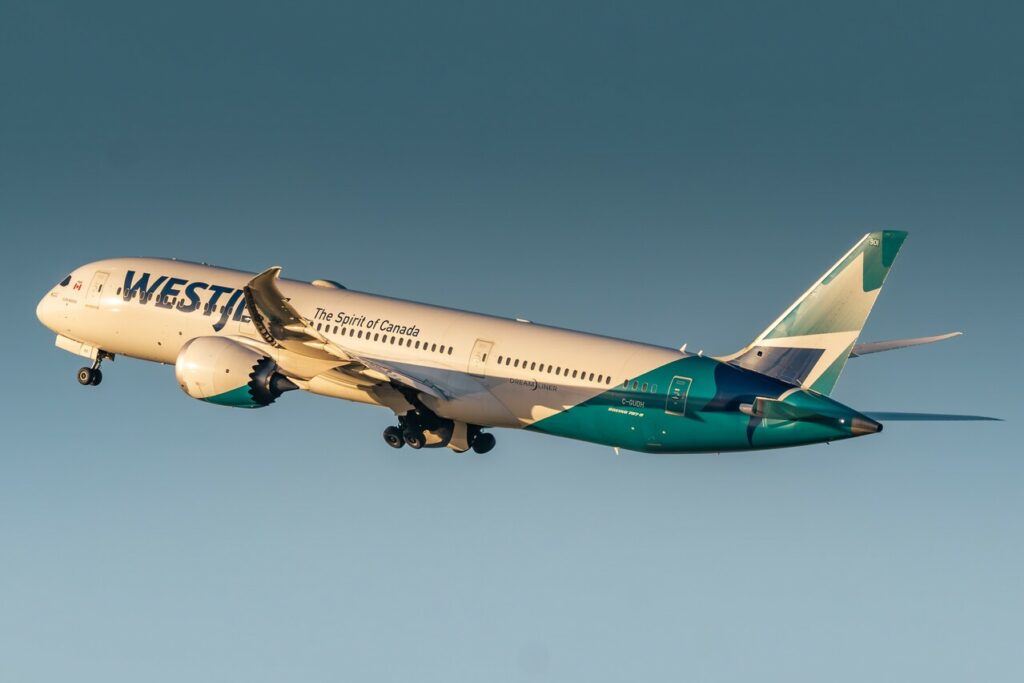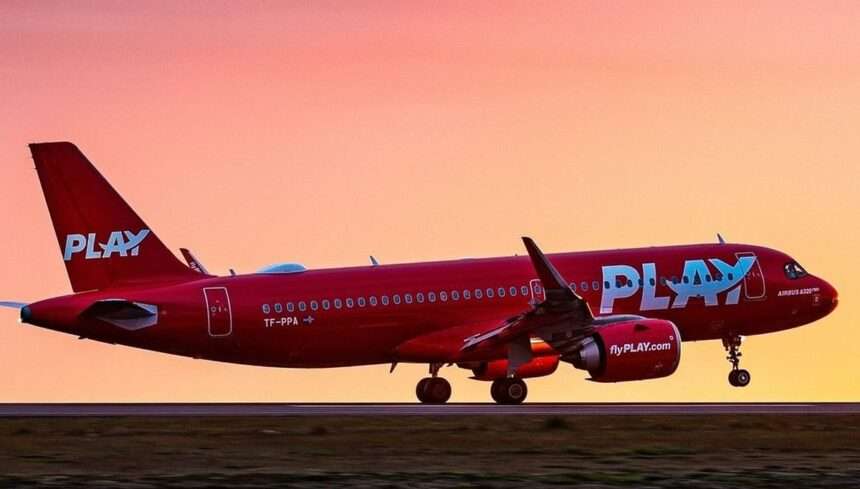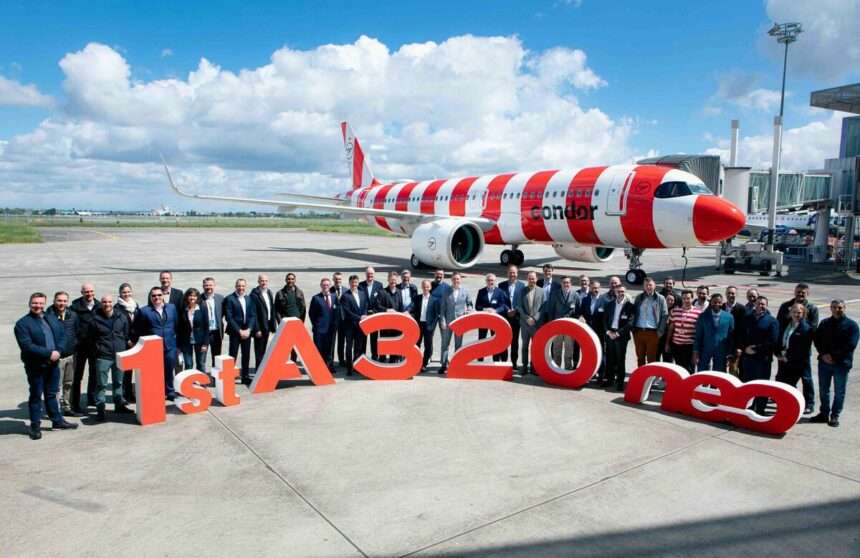Canadian carrier WestJet achieved an impressive 11% reduction in its fuel emissions intensity in 2023 compared to 2019.
The reductions align with the airline’s commitment to responsible growth and the International Civil Aviation Organization’s (ICAO) goal for achieving net zero carbon emissions by 2050.
Fleet and Network Planning Strategy
WestJet’s success in lowering emissions intensity stems from strategic initiatives focused on both their aircraft and flight operations.
Modernizing their fleet with newer, more fuel-efficient planes played a key role. Additionally, optimizing flight paths through responsible network planning has demonstrably reduced WestJet’s environmental footprint.
“Sustainability has been a core principle at WestJet for over two decades,” said Angela Avery, WestJet Group Executive Vice President and Chief People, Corporate and Sustainability Officer.
“These significant reductions in emissions intensity are a testament to our dedication to tackling climate change.”
“They solidify WestJet’s position as a Canadian leader in sustainable aviation with a proven track record of environmental responsibility.”

Fleet Modernization Program
In 2022, the airline embarked on a multi-billion-dollar investment to strengthen airline’s presence in Western Canada. The move would underpin growth in transcontinental and leisure offerings from eastern Canadian communities.
In a strategic move to solidify its presence in Western Canada and expand service offerings across the country, WestJet secured a multi-billion-dollar deal with Boeing in 2022.
This agreement involved the purchase of 42 new 737 MAX aircraft, with options for an additional 22, significantly boosting their existing order.
With deliveries scheduled through 2028, this investment will see WestJet’s fleet grow by at least 65 aircraft, with a focus on the fuel-efficient 737-10 model.
“This expansion strengthens our commitment to providing affordable travel for Canadians, while creating jobs within WestJet and the aerospace industry,” said Alexis von Hoensbroech, WestJet Group Chief Executive Officer, at the time of the announcement in 2022.

This supported WestJet’s two-pronged growth strategy:
- Enhancing Western Canadian Presence: The airline plans to solidify its foothold in Western Canada with this increased capacity.
- Expanding Eastern Canadian Network: New routes and increased transcontinental flights are planned, offering more options for leisure travel and connecting eastern communities.
Features of the Boeing 737-10
- Greater fuel efficiency and the best per-seat economics of any single-aisle airplane in the industry.
- Can cover 99 per cent of the world’s single-aisle routes, ideal to serve WestJet’s growing domestic and international network.
- Reduced fuel use and carbon emissions by at least 20 per cent per seat compared to previous generations, helping airlines make air travel even more sustainable.
- Improved guest comfort with a quieter cabin featuring the Boeing Sky Interior, LED lighting that enhances the sense of spaciousness and larger overhead stowage bins.
- Quieter airplane, creating a 50 percent smaller noise footprint than the airplanes it replaces.

Advocacy for SAF Uptake
WestJet has also strongly advocated for the production and uptake of sustainable aviation fuels (SAF) by the Canadian aviation sector. The airline’s CEO laid out their stance at the 24th World Petroleum Congress last year.
“Air travel is essential to Canadians and critical to the nation’s economy; with the right regulatory environment and collaborative efforts of producers and airlines, Canada has an enormous opportunity to further its global leadership in energy sustainability through SAF production,” said Alexis von Hoensbroech at the conference.
“The time is now for a regulatory framework to create a competitive investment climate for sustainable aviation fuel production, right here in Canada, that keeps air travel affordable and accessible.”

Did you know AviationSource has two newsletters? One covers the general news and analysis of the industry as a whole, and the other to do with emergencies that take place throughout the year! To subscribe to our General News Newsletter, CLICK HERE!
To subscribe to our Emergencies, Accidents & Incidents Newsletter, CLICK HERE!

Click the photo to join our WhatsApp channel so then you can stay up to date with everything going on in the aviation industry!








